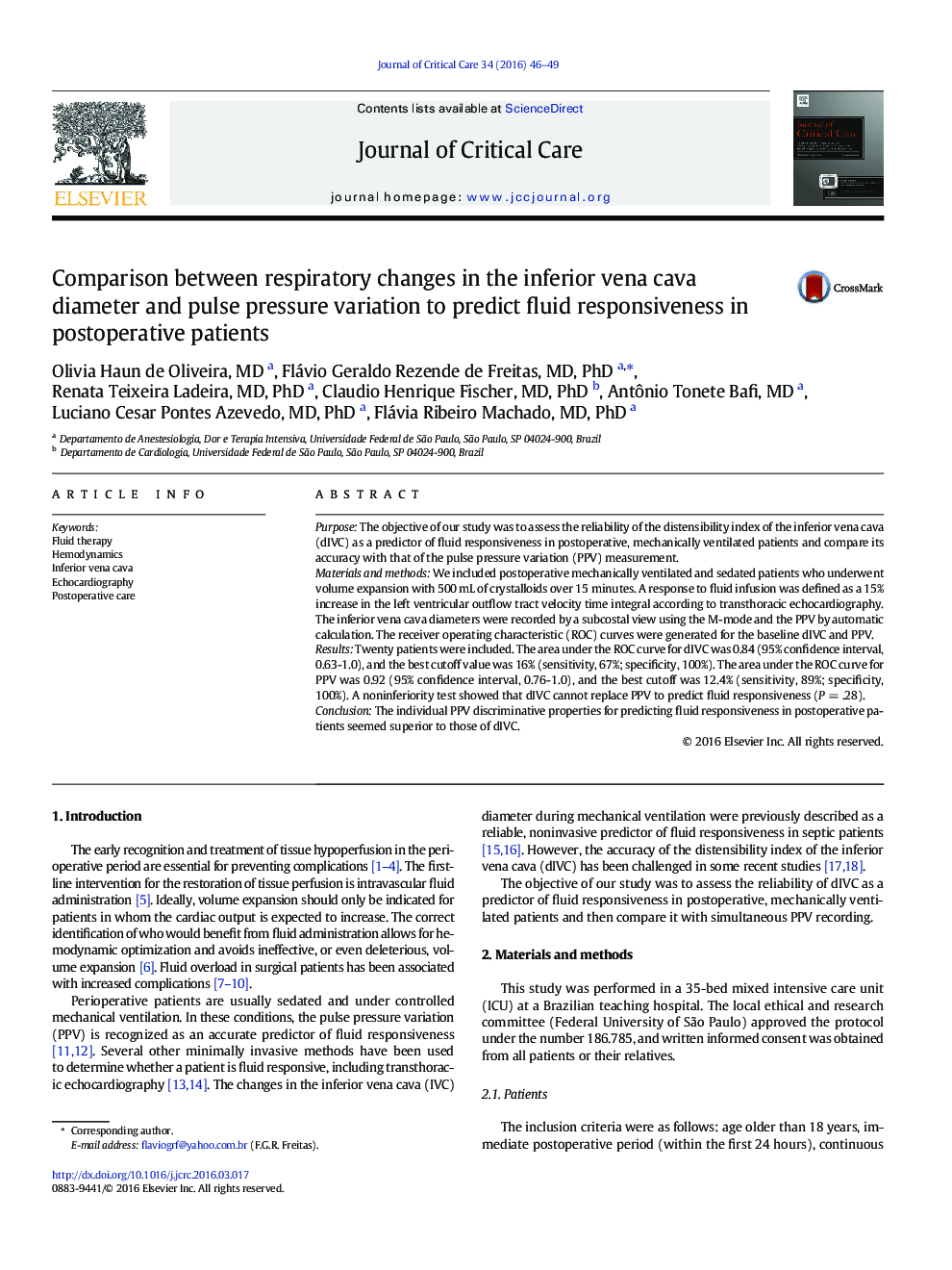| Article ID | Journal | Published Year | Pages | File Type |
|---|---|---|---|---|
| 5885150 | Journal of Critical Care | 2016 | 4 Pages |
PurposeThe objective of our study was to assess the reliability of the distensibility index of the inferior vena cava (dIVC) as a predictor of fluid responsiveness in postoperative, mechanically ventilated patients and compare its accuracy with that of the pulse pressure variation (PPV) measurement.Materials and methodsWe included postoperative mechanically ventilated and sedated patients who underwent volume expansion with 500Â mL of crystalloids over 15Â minutes. A response to fluid infusion was defined as a 15% increase in the left ventricular outflow tract velocity time integral according to transthoracic echocardiography. The inferior vena cava diameters were recorded by a subcostal view using the M-mode and the PPV by automatic calculation. The receiver operating characteristic (ROC) curves were generated for the baseline dIVC and PPV.ResultsTwenty patients were included. The area under the ROC curve for dIVC was 0.84 (95% confidence interval, 0.63-1.0), and the best cutoff value was 16% (sensitivity, 67%; specificity, 100%). The area under the ROC curve for PPV was 0.92 (95% confidence interval, 0.76-1.0), and the best cutoff was 12.4% (sensitivity, 89%; specificity, 100%). A noninferiority test showed that dIVC cannot replace PPV to predict fluid responsiveness (PÂ =Â .28).ConclusionThe individual PPV discriminative properties for predicting fluid responsiveness in postoperative patients seemed superior to those of dIVC.
